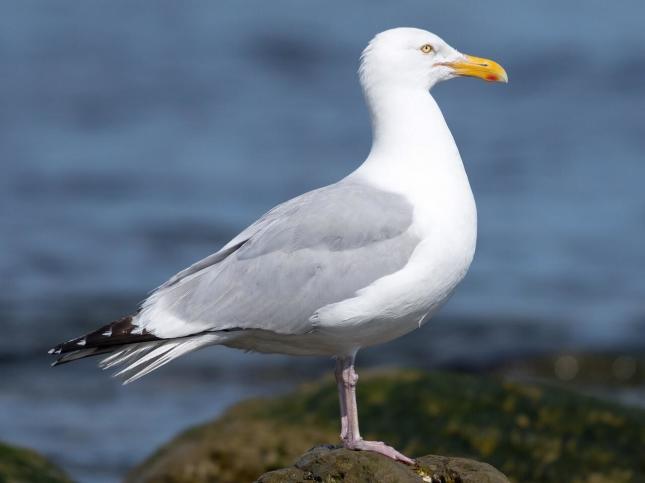
Fun Facts About Herring Gulls
- Spiraling above a fishing boat or squabbling at a dock or parking lot, Herring Gulls are the quintessential gray-and-white, pink-legged "seagulls." They're the most familiar gulls of the North Atlantic and can be found across much of coastal North America in winter. A variety of plumages worn in their first four years can make identification tricky—so begin by learning to recognize their beefy size and shape.
- Herring Gulls prey on marine invertebrates, fish, insects, smaller seabirds, and even on adults, young, and eggs of other gulls. Along rocky shores, they take mussels, crabs, sea urchins, and crayfish. On mudflats, they seek worms, small clams, and mussels. In open water, they follow large predators (including fishing boats) that bring small fish, squid, and zooplankton to the surface. Newly plowed fields provide ready supplies of earthworms and other invertebrate prey. Herring Gulls are opportunistic scavengers on fish, carrion, and trash.
- Courtship rituals include mate-feeding, and pairs remain bonded as long as both live. They return to the same territories each breeding season and share the work through a month of incubation and three months of chick-raising. One parent is always at the nest until the chicks are at least a month old.
- Herring Gulls' scavenging habits take them to open water, intertidal pools and shallows, mud flats, landfills, newly plowed fields, picnic grounds, and fish-processing plants. They roost and loaf, often in large mixed species groups, in open areas with good visibility for spotting predators, including agricultural and athletic fields, beaches, parking lots, airport runways, and garbage dumps. (“Loafing” is a term behaviorists use to describe a bird that isn’t doing much of anything; many seabirds spend long hours this way.) They breed near lakes in northern forests across Canada to Alaska and in some coastal areas. Colonies often form on isolated islands, barrier beaches, and marshy hummocks, which are safe from terrestrial predators (though aerial predators can still be a danger). City rooftops, for example, serve the same purpose.
- The oldest recorded Herring Gull was at least 29 years, 3 months old when it was seen in the wild in Michigan in 2015 and identified by its band. It was originally banded in Wisconsin in 1986.

